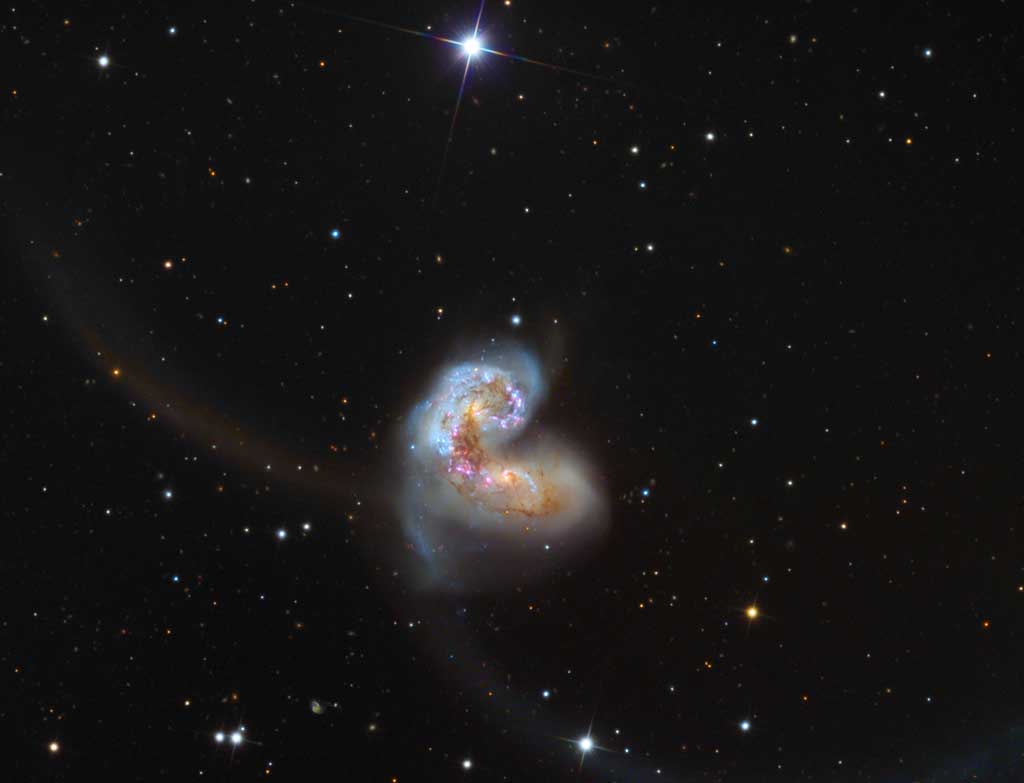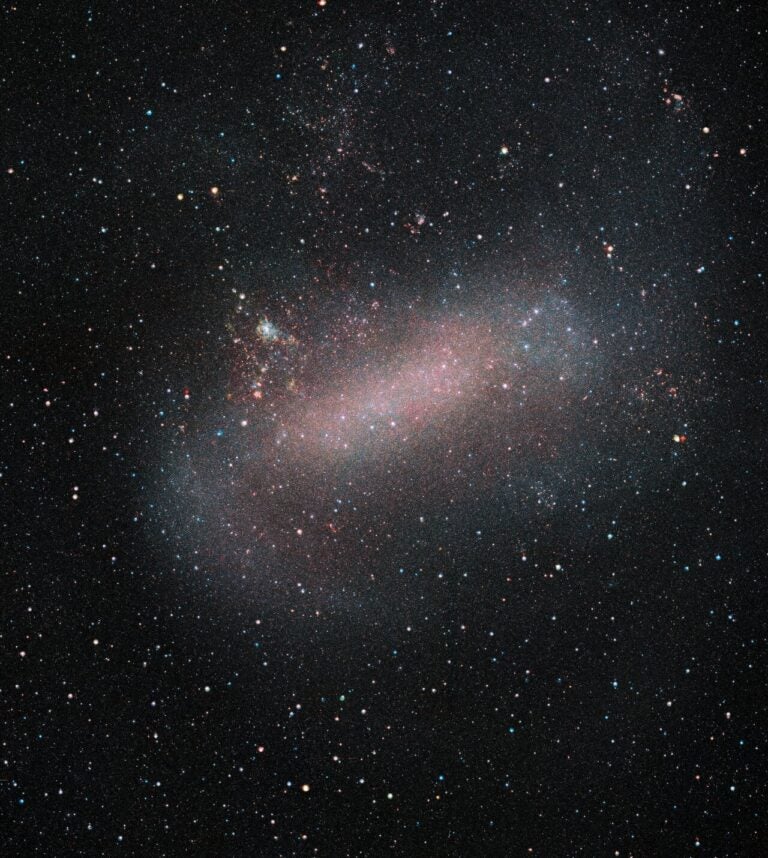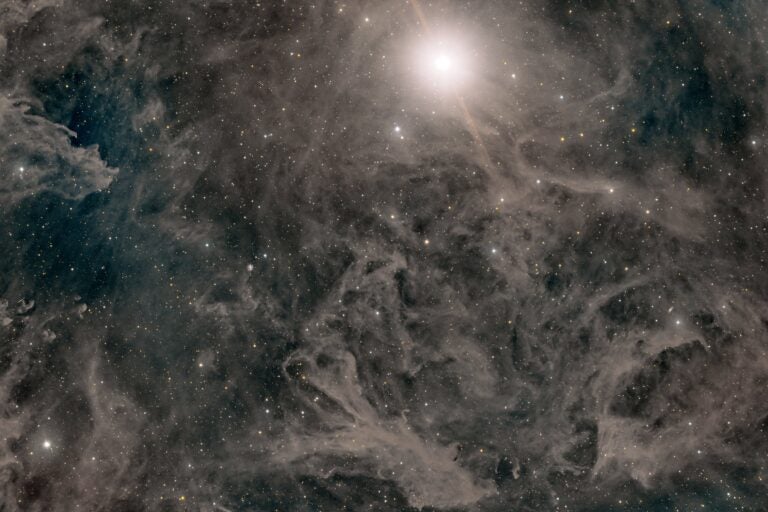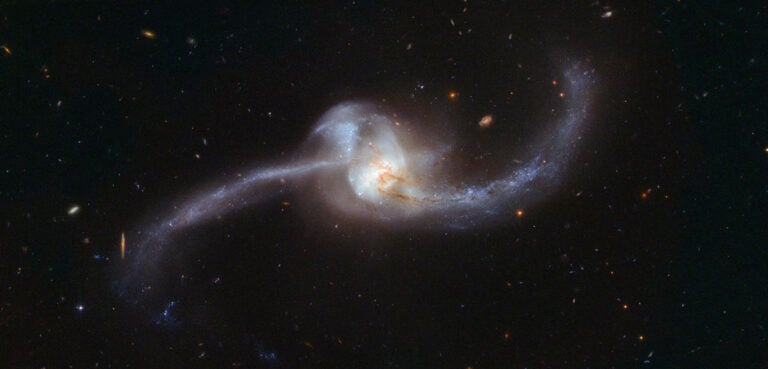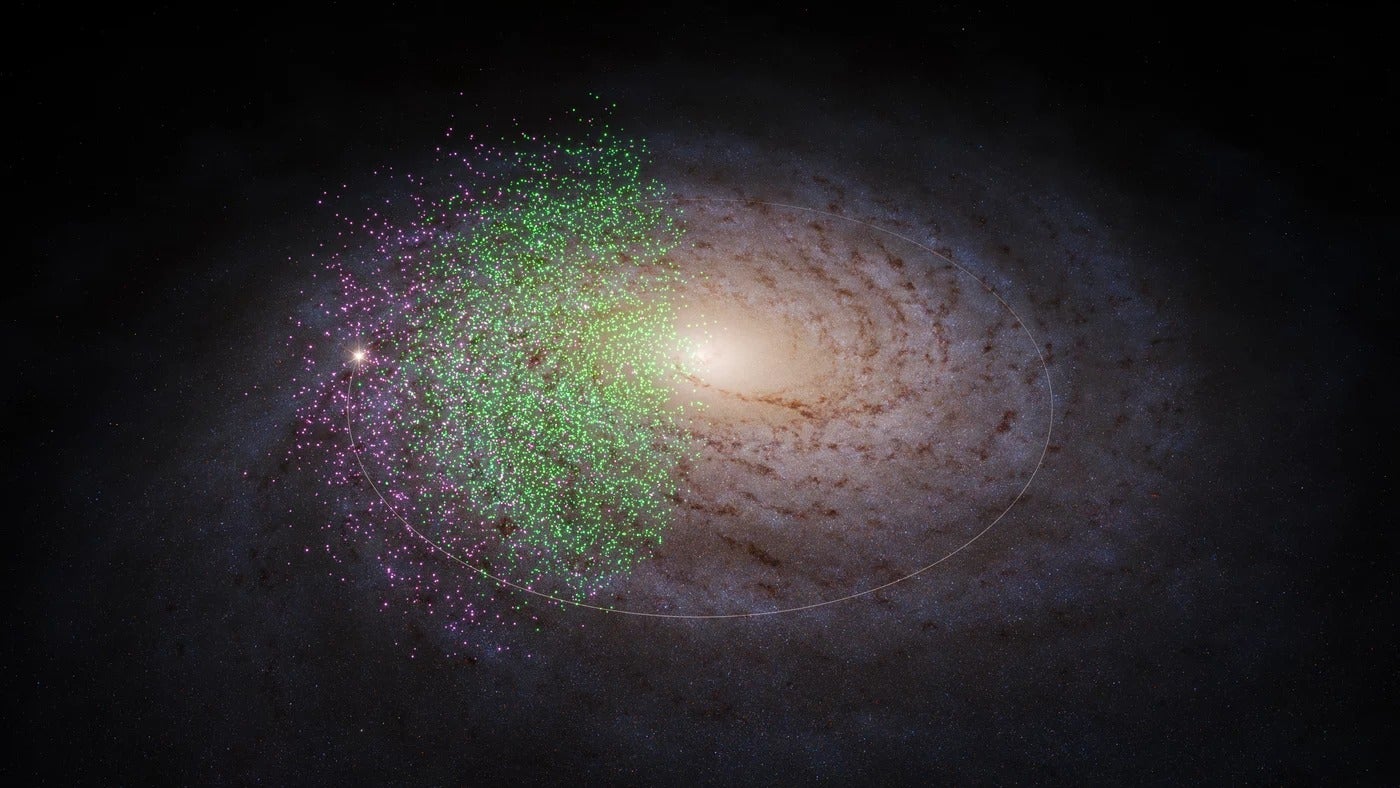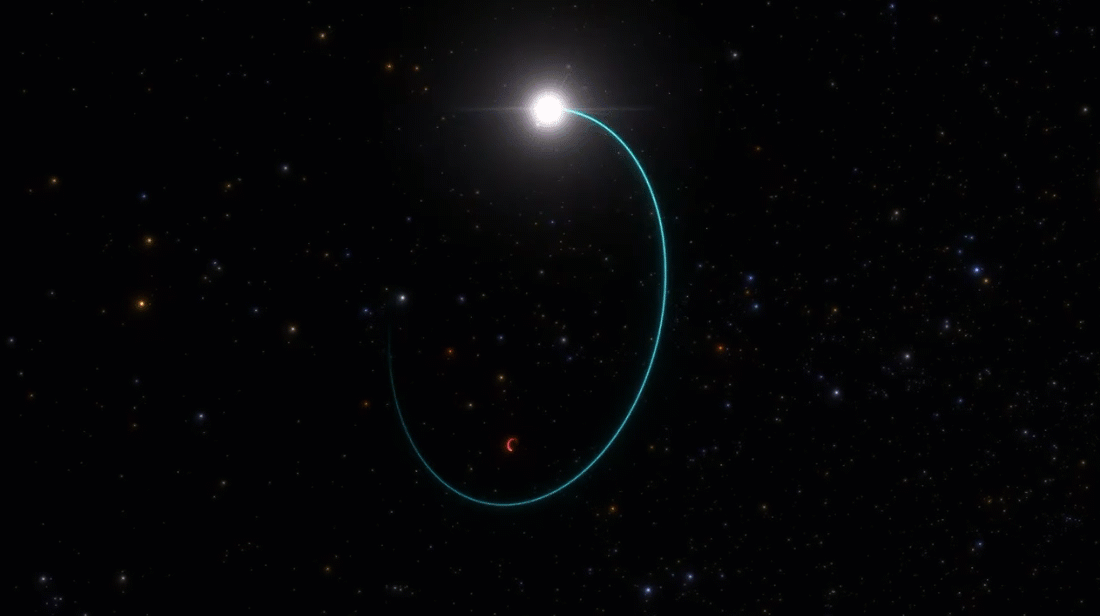Astronomers refer to NGC 4038 and NGC 4039 collectively as the Antennae Galaxies because of the two long streamers of material their gravitation interaction has flung from both objects. This is one of the best known instances of a galactic merger. // Adam Block/Mount Lemmon SKyCenter/University of Arizona
Determining the age of the Milky Way Galaxy is as difficult as determining the age of a forest: One can measure the ages of individual trees, but at what point in the past were there enough trees to define a forest? Similarly, we determine the age of the Milky Way by measuring the ages of stellar clusters and individual stars.
Mass dictates a star’s lifetime. If stars form in a cluster, we can calculate the cluster’s age by determining the most massive members remaining in the group. For the oldest globular clusters in the Milky Way, this method yields a maximum age of around 13.3 billion years, with an uncertainty of about ±2 billion years.
We also can estimate ages of individual stars, either by measuring the temperatures of stellar remnants called white dwarfs (they cool as they age) or the amount of radioactive elements in the atmospheres of long-lived low-mass stars. The oldest of both of these types of stars are about 12.6 to 13.2 billion years old. However, the stars that make up the main disk of the Milky Way appear to be younger — between 8 and 10 billion years.
Mass dictates a star’s lifetime. If stars form in a cluster, we can calculate the cluster’s age by determining the most massive members remaining in the group. For the oldest globular clusters in the Milky Way, this method yields a maximum age of around 13.3 billion years, with an uncertainty of about ±2 billion years.
We also can estimate ages of individual stars, either by measuring the temperatures of stellar remnants called white dwarfs (they cool as they age) or the amount of radioactive elements in the atmospheres of long-lived low-mass stars. The oldest of both of these types of stars are about 12.6 to 13.2 billion years old. However, the stars that make up the main disk of the Milky Way appear to be younger — between 8 and 10 billion years.
So, the Milky Way clearly was — and is — a work in progress. We’ve observed dwarf galaxies currently being torn apart by, and merging with, the Milky Way, so it seems highly likely that this process was occurring in the past as well. Identifying which stars once belonged to what systems is a difficult, but not impossible, task.
Robert Benjamin
University of Wisconsin-Whitewater
University of Wisconsin-Whitewater

